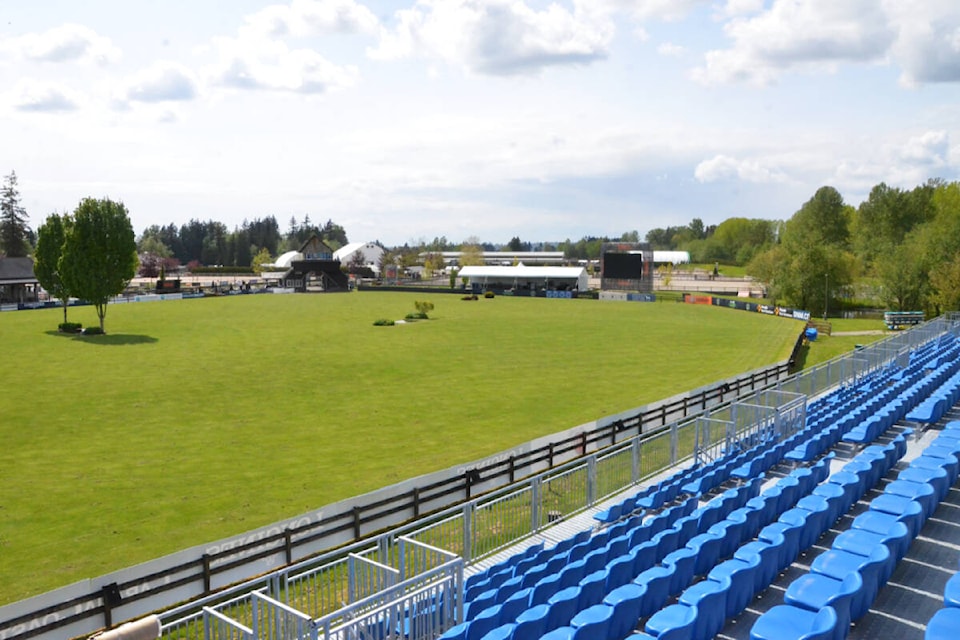What’s the secret ingredient to hosting some of the most elite-level competitive jumping competitions in the equestrian world?
Is it great stables, plenty of shopping, lots of seating, or something uncontrollable, like nice weather?
For Thunderbird Show Park, the start of the experience is what’s under the horses’ hooves.
“They love our footing,” said tbird CEO Jane Tidball.
Getting that right has been a key ingredient for attracting riders back year after year.
Hosting a riding and jumping event in B.C. can mean dealing with mucky ground and damp terrain, and that’s not ideal, she noted.
“Drainage, when it’s raining, is really important,” she said. “Horses don’t like running around on sloppy sand.”
There are two kinds of arenas at tbird. Most of them are covered in a pale, off-white sand, but that’s just the visible layer.
At one corner of the park this week, crews were assembling the three layers that go into a new arena floor. The arena, dubbed Bakerview for the vantage fans will have of the mountain, starts with a layer of plastic, three-dimensional mats.
The mats, which somewhat resemble large flat egg cartons, are sturdy but springy, bouncing back when stepped on.
Over that is poured a layer of smooth, small pebbles made of crushed rock.
Finally, the top layer is made largely of silica sand, large piles of which are stored on site to be dispersed to arenas where needed.
The setup is remarkably stable, with the crews believing it will last about 10 years before the plastic mats have to be replaced. The oldest of the arenas now has mats that are 10 years old, so it may soon be time to start cycling out the oldest arenas and replacing the key components.
It also provides a very necessary element – good drainage.
It takes a few months, on and off, to get all the elements in place and ready for riders to arrive.
The mats-crushed stone-sand setup covers the majority of the dozen-plus rings at tbird, including rings for hunter competition, lunging, and warm ups.
The other type of arena at tbird is the largest – the turf arena, which are required for certain types of international competition.
The Fort Grand Prix arena is where riders in Longines and other highest-level competitions will be seen, jumping before a judging tower and stands full of viewers. As of this month, it’s a bright, smooth emerald green, and it didn’t get that way by accident.
“So much work!” said Tidball.
The grounds-keeping crews at tbird are busy making sure the turf is in good shape all through the riding season, but spring is a key time.
“We start in about March getting it prepared for a May show,” said Tidball.
In addition, the grounds-keeping staff have plenty of work to do keeping all the other grassy and treed areas around the park spruced up for when riders and viewers come to the show park.
Have a story tip? Email: matthew.claxton@langleyadvancetimes.com
Like us on Facebook and follow us on Twitter.
